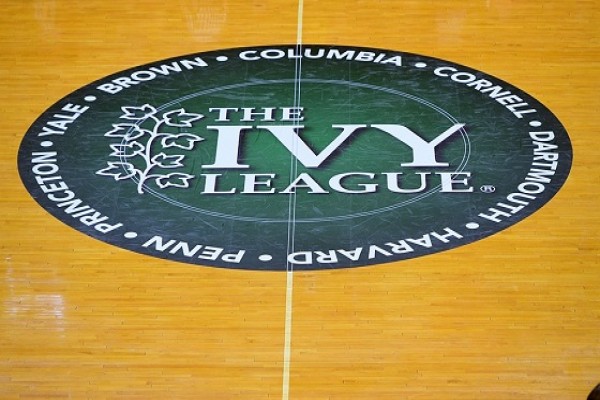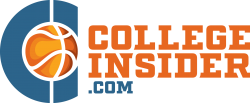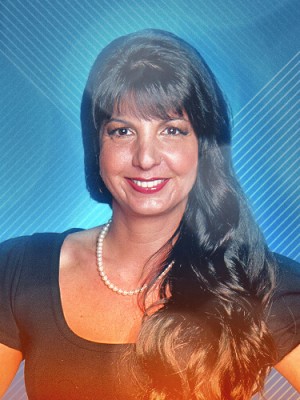Mid-Major Notebook
Mid Major Notebook : Mid-Major Notebook
Print

From 1960-2007, Penn and Princeton won 44 of 48 Ivy titles, including 19 consecutive during one stretch.
Scholars and Ballers
The Rise of the Ivy League
Penn rattled the college basketball world on December 11th when it stunned defending national champion Villanova 78-75 in a nationally televised game played at the legendary Palestra.
The victory reverberated beyond downtown Philadelphia and Big 5 lore, snagging headlines and perceived as a miraculous upset. A closer examination reveals, however, that beating power conference opponents is protocol in the modern Ivy League, which is the 12th strongest in the nation according to the Pomeroy Ratings, landing ahead of Conference USA, the Missouri Valley and the Sun Belt.
Earlier in the season, Princeton defeated Arizona State, the same Arizona State which was fresh off beating No. 1 Kansas a week before. Yale beat Miami. And despite missing two starters, Harvard entered McKeon Pavilion, a venerable noisebox known for chewing up and spitting out most guests, and handled perennial mid-major power Saint Mary’s.
This is a new era for the Ivy. In the wake of recent regular season and NCAA tournament success, each program has embraced higher expectations, striving to offer an elite experience in the classroom and on the court.
“I think we currently are one of the best mid major leagues in the country, with terrific depth from top to bottom, and hope that we can continue to improve,” said Brown head coach Mike Martin, who has led the Bears to a 12-5 record.
“I wouldn't want to put any limits on what this league can become because when you think about our universities and our league's brand, we are the ultimate in higher education. I don't think we should limit ourselves from trying to become the very best in athletics, specifically basketball.”
Or, listen to Harvard coach Tommy Amaker, whose arrival in the Ivy prior to the 2007-08 season served as the tipping point for the upgrade in talent and the rush of positive results enjoyed around the conference.
“We’ve always said that we want guys who are scholars and ballers,” the former Duke point guard said.
The Ivy League, which formed in 1902, is the second oldest college basketball conference in the nation. It’s had the same eight members since inception yet for the better part of five recent decades the Ivy was a two-team race.
From 1960 until 2007, Penn and Princeton won 44 of 48 Ivy titles, including 19 consecutive during one stretch. The Quakers and Tigers are the only Ivy programs with an overall winning record, each claiming roughly 62 percent of games in more than 100 years of competition.
Dartmouth reached the Final Four in 1941 and 1959, but Princeton assumed command the following decade as coach Butch van Breda Kolff’s squad, led by future Hall of Famer Bill Bradley reached the national semifinals in 1965.
Penn ruled the 1970s, beating North Carolina in Raleigh in the 1979 NCAA tournament on the way to the Final Four where it fell to Magic Johnson and Michigan State.
Princeton coach Pete Carril orchestrated a masterpiece and captured the nation’s attention in the 1989 NCAA tournament as his 16th seeded team lost 50-49 to top-seeded Georgetown.
The Tigers confounded the Hoyas with their deliberate offense filled with capable jump shooters and backdoor cuts to the basket. They worked the shot clock to single digits on each offensive possession and nearly pulled off the miracle.
Flash forward to 2007 when Harvard hired Amaker.
“I think for a long time in this league, there was a perception that there was only one way to play, one way to recruit and one system to use,” Amaker said. “When we arrived at Harvard, we tried to bring a different style - one that emphasized athleticism, defending and playing with pace. In order to play that way, we had to recruit different kinds of kids that didn’t necessarily fit the ‘prototype’ of an ‘Ivy League kid.’
At the same time Cornell started a dominant three-year stretch, posting a 38-4 conference record from 2007-08 to 2009-10, culminating with a Sweet 16 run that included wins over Temple and Wisconsin.
Steve Donahue parlayed the Big Red’s success into the Boston College job. After four seasons as coach there he returned to the Ivy, taking over the Penn program in the spring of 2014.
During Donahue’s last three years at Cornell, the Ivy League had an average ranking of 27th nationally (out of 32 conferences) in KenPom and 25th in RPI. Within three or four years the Ivy was ranked in the mid to upper teens annually. Donahue sees the transformation as a simple one for all the Ivy League schools, which do not offer athletic scholarships.
“Once Harvard established that they were going to offer need-based financial aid, that changed the game for the Ivy League,” Donahue said. “Everyone followed their example and now, while we still can’t provide full athletic scholarships, we can provide financial relief that can compete with a scholarship. That means that better players began entertaining the idea of playing in the Ivy League. Better players means better teams across the board.”
Harvard’s recruiting model began to bear fruit in 2009-10 when the program started a run of six consecutive 20-win seasons. The Crimson represented the Ivy in the NCAA Tournament from 2012-15, defeating New Mexico in 2013, Cincinnati in 2014 and losing by two points to North Carolina in 2015.
“We were fortunate to have some success with our system which, moving forward, I believe elevated our ability to attract talented kids,” Amaker said. “We then had a few high level (Top 100 etc.) kids, in particular, opt for Harvard over the “blue-bloods” - UCLA, Ohio State, etc. As a result, it became, for lack of a better word, “easier” for future kids to justify making the decision to go to a ‘Harvard’ over a high major because there were already similarly ranked players on the roster. That had a bit of a domino effect on the rest of the schools in our league.”
Yale joined the postseason party in 2016, capitalizing on its first NCAA tournament appearance in 54 years by beating fifth-seeded Baylor in the first round before falling to Duke 71-64 in the round of 32.
The Bulldogs endured 33 losing seasons during their NCAA drought. Their arrival in March Madness proved how far the Ivy had come in the last decade. This was no longer a two-team league with six other squads simply jockeying to finish third.
“The League’s ability to attract higher profile student-athletes along with the unique coaching styles has helped change the level of all the teams in the league,” said Yale head coach James Jones. “Talented players are understanding that they can make it to the NBA from our league and they want to be associated with the brand of Ivy League basketball. They realize there is life after basketball and they want to be great on the court and in the classroom.”
Jeremy Lin, who played at Harvard from 2007-2010, is the only former Ivy player currently in the NBA. He’s in his eighth year, averaging 10.8 points per game for the Atlanta Hawks. Jeff Foote, the 7-foot Cornell center, was drafted by the New Orleans Pelicans in 2010 and several other Ivy stars have signed free agent contracts.
Without question, the conference is stronger from top-to-bottom in the 2018-19 season, reflected in overall records and the Ivy’s ranking - 14th in Sagarin, 10th in RPI and 12th in KenPom through mid-January. All but two teams have winning records and one of those is Harvard, which is 7-7 through Jan. 21st but was shorthanded as it navigated the nation’s 31st most difficult nonconference schedule. The Crimson dropped its Ivy opener to Dartmouth, yet remains a candidate to crack the top four and qualify for the Ivy conference tournament, which began in 2017 to determine the automatic qualifier to the NCAA tournament.
The balance and parity is good news for new coaches like Jim Engles, in his third season trying to build a winner at Columbia after a successful run across the Hudson and Hackensack at NJIT.
“Due to the success of the Ivy League on the court the number of players who are already aware of the leagues accomplishments has grown exponentially,” he said. “Which makes it a lot easier to become involved with a higher level of player who does not need to be convinced on the caliber of play he will be exposed to but allows you to zero in on what a degree from the ivy league can do to change someone’s life while not forgoing the chance to play in the NBA.”
Having a quality product to present on the court is one thing. It helps if people can watch it, though. With national television opportunities scarce for conferences outside the top eight, the Ivy League was proactive, creating a subscription based digital network in 2013. Last spring, the league entered a 10-year deal with ESPN Plus, giving viewers a more affordable online home to watch college basketball.
“The emergence of social media and online streaming has definitely played a big role in the rise of the level of play in our league. High school kids are now able to easily access and see our league’s games on a variety of platforms, as opposed to only being able to see the select number of nationally televised games,” Donahue said. “Additionally, families realize that, no matter where their son may end up playing basketball, they’ll be able to actively participate in viewing and following the games, even if it isn’t in person. Lastly, I think the emergence of social media and online streaming have also helped coaches recruit better. You’re able to see video on almost any kid, while also having access to his stats and other information with great ease. This increased transparency has broadened the geographic range in which teams in our league recruit.”
Although successful Ivy League programs are always vulnerable to losing a coach to a higher-paying power conference school, the tools are in place for the conference to enjoy sustained success. There’s a strong stable of veteran coaches who understand the nuance of their program, the region and the league. There’s a deeper pool of talent from which these coaches can recruit. Athletes (and their parents) understand the value of an Ivy education. Also, other mid-major powerhouses may live in fear of having their best players pilfered by a top-25 program. This is less of a threat in the Ivy where teams can grow old together and offset their lack of size or depth with experience and team chemistry.
“I would not be surprised if an Ivy League team makes a run to the Final Four in the near future,” said Donahue, whose Penn squad is 11-6 overall and also defeated Miami (FL) in December but dropped its first two Ivy games - showing yet another example of the league’s tremendous depth.
“Once you get to the NCAA Tournament, it’s all about matchups and an experienced, talented Ivy League team could be able to knock off a few teams and make a deep tournament run. I think we’ve seen the beginning of that possibility with some of the recent wins teams in our league have gotten in their non-conference games.”



